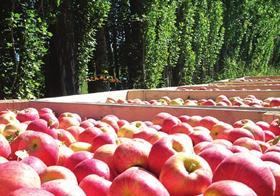
Pipfruit New Zealand has forecast an apple and pear export crop of 16.9m cartons for 2013 in its first estimate for the season.
The volume marks a 6 per cent increase on 2012 shipments, according to CEO Alan Pollard, who said it was “relatively modest and marked the most balanced crop in many seasons'.
In recent years, New Zealand apple growers have been scaling back production of one of their traditional staple export varieties, Braeburn, a result of the country’s reduced reliance on the European market.
With their products enjoying sustained export growth in Asia and the Middle East, which have grown their combined share of total export volumes from 33 per cent in 2011 to 40 per cent in 2012, growers have shifted their focus to varieties with more appeal to these developing markets.
“We are forecasting some modest increases in most varieties, with Braeburn being the exception,” Pollard said.
“All of our newer varieties are up in volume, which is extremely positive. In particular the Pacific series continues to gain momentum.”
While the exploration of new markets has prompted a distinct shift in the varieties grown in New Zealand, it appears some things will never change.
Pollard said producing high-quality fruit was still at the core of the country’s apple and pear industries.
“New Zealand’s reputation as a reliable supplier of high quality, well-coloured, safe apples and pears enables us to command premium prices in all markets,” he said.
“This year will be no different, with exporters already receiving good levels of enquiry from Asia, Europe and North America.”
Again the largest percentage of this year’s export volume will come from Hawke’s Bay, which will supply 61 per cent (10.4m cartons) of the crop.
It appears storms and high winds, which blew through Nelson earlier this month, have not taken their toll, with the region expected to account for 31 per cent (5.2m cartons) of the total export volume.
“The hail in Nelson was relatively localised, so whilst it had some significant impact for some growers, overall the impact was relatively minimal,” Pollard said.
Harvesting on some early varieties has begun, with the season expected to get under way in earnest by mid-February.



